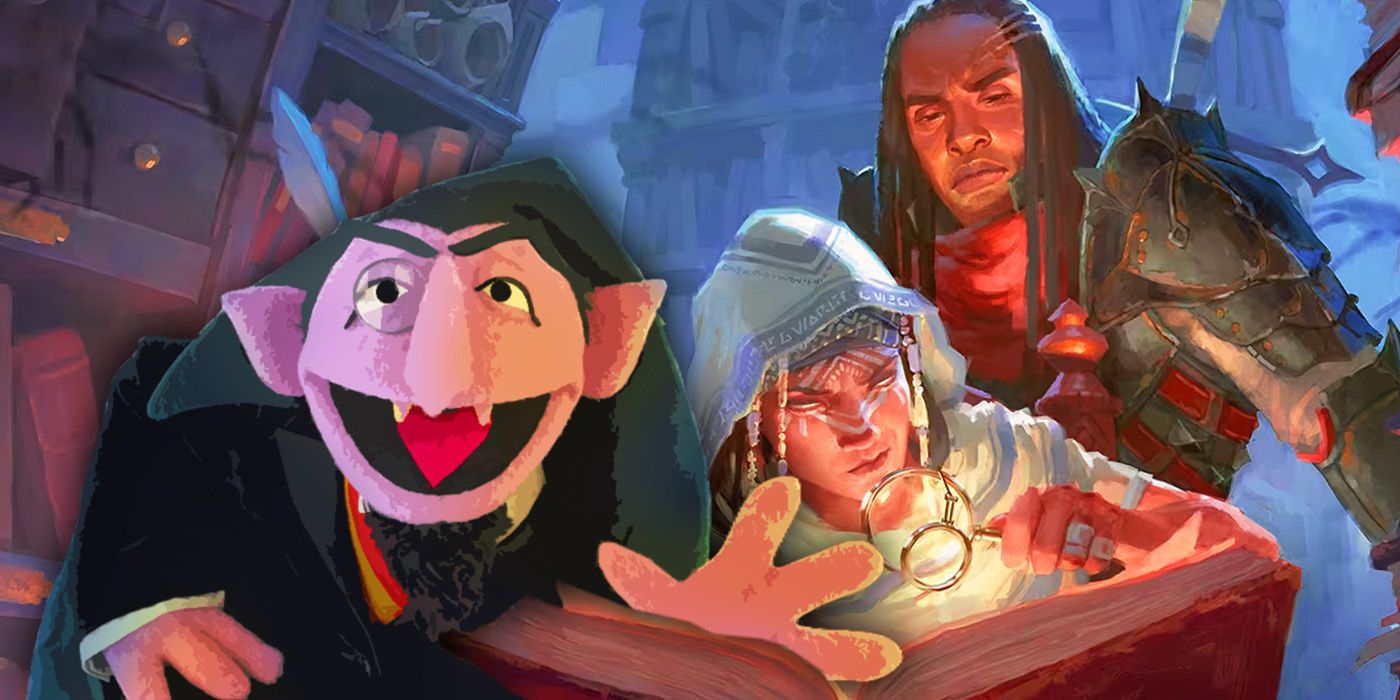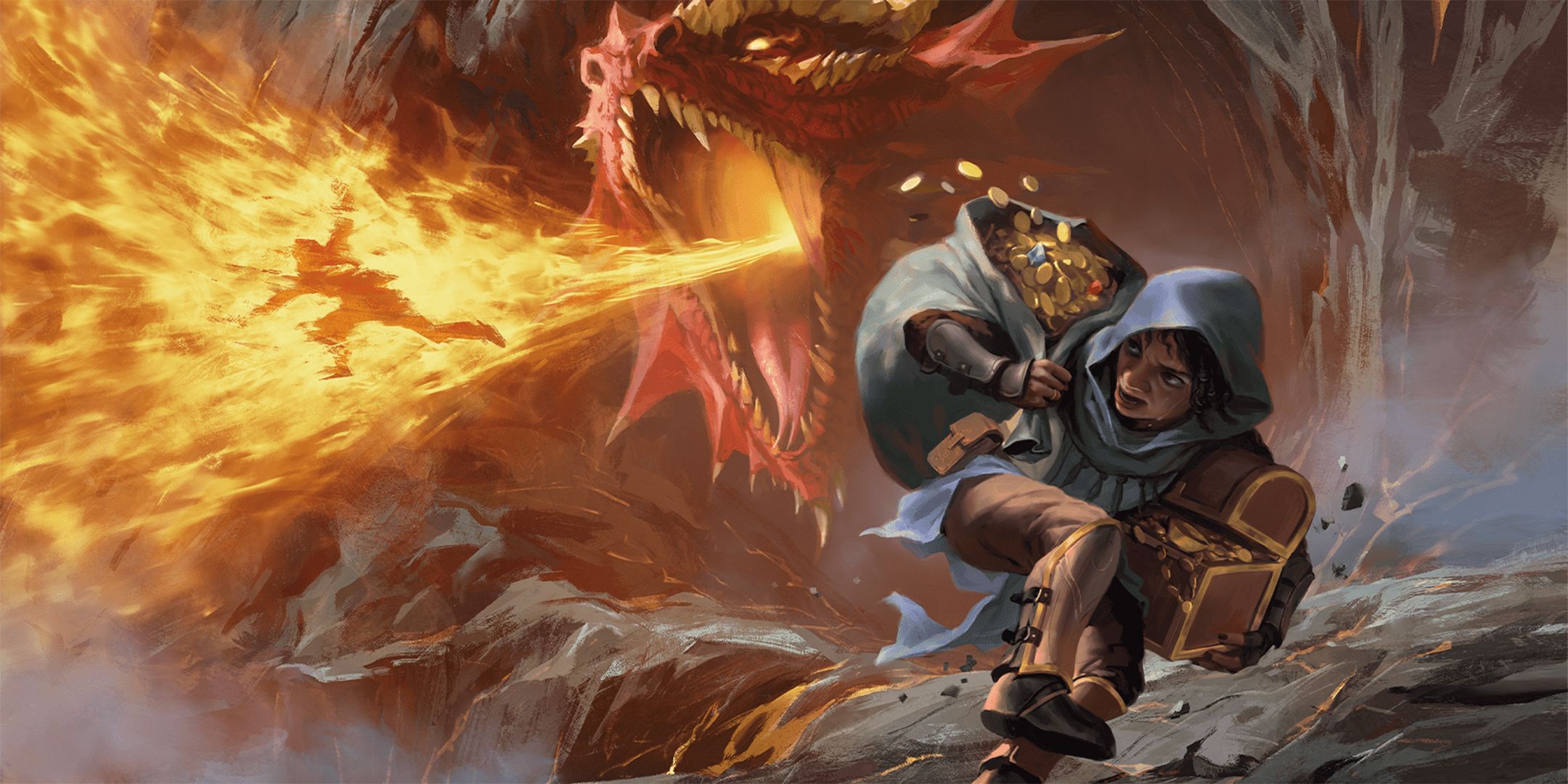10 Weirdest Magical Items That Force Your D&D Party To Get Creative

Dungeons & Dragons is full of powerful magical items, but at first glance some seem useless or even harmful to the party. While being rewarded with one of these items may initially be disappointing, in my experience D&D players will eventually find an interesting use for any item you give them. These types of items can be a good way to force your players to get creative with their roleplaying to solve problems.
Although these items can be a lot of fun, it’s still important that you award them at the right time. If your party has just defeated Tiamat or completed a difficult campaign like The Curse of Strahd, then you probably want to give them something better than one of these items. However, these can be a lot of fun as rewards you sprinkle into your campaign for completing less arduous tasks.
10
Dust Of Sneezing And Choking Can Incapacitate Enemies
This Dust Makes It Impossible To Breathe
The Dust of Sneezing and Choking is a Wondrous Item that appears in the free Basic Rules that were released in 2014 alongside the introduction of Dungeons & Dragons‘ Fifth Edition. This magical dust looks like the Dust of Disappearance, which you can toss over creatures or items to turn them invisible. The Dust of Sneezing and Choking even fools the Identify spell, meaning even extra-wary players may accidentally use this on themselves.

Related
D&D 2024 Core Rules: Creative Commons SRD 5.2 Release Date Announced By WOTC
Dungeons & Dragons will release a new System Reference Document on April 22, providing guidelines for making compatible material for the game.
When tossed into the air, instead of turning things invisible, this dust makes it impossible to breath within a 30-foot radius of the thrower. Anyone who fails a DC 15 Constitution Save inside the radius becomes incapacitated and starts suffocating as they sneeze uncontrollably. Although this magic item may just seem like a mean prank by the DM, it can also be a powerful weapon. Give this to a high-Constitution party member, and it becomes a bomb they can set off in the middle of a crowd of enemies, and likely still make it out unscathed.
9
Ring Of The Goat Lets You Eat Almost Anything
This Popular Homebrew Ring Turns Wood Into Rations
Although not an official D&D magic item, I have seen several iterations of a Ring of the Goat magic item that allows players to consume any organic material. Personally, I like the version on the D&D Wiki, though like anything in D&D, you’re free to get creative with it if you want to change it up a bit. I find this version of the ring perfect for inspiring creativity among your players because it isn’t inherently too powerful.
In campaigns where DMs are strictly tracking food consumption, this ring can be pretty convenient, as you can just scrounge up some grass or twigs instead of having to buy rations. However, this item gets a lot more fun when you start to see everything in the world as edible. Stuck in a wooden cell or room? Chew your way out. Need to hide a letter from an enemy? Swallow it. It won’t be useful all the time, but this ring can be handy in the right situations and good for some big laughs.
8
A Bag Of Devouring Can Eat Your Entire Party
This Bag Disguises Itself As A Bag Of Holding
The Bag of Devouring is a newer magical item, introduced in the D&D Free Rules 2024 edition. Like the Dust of Sneezing and Choking, this item disguises itself as a very useful magic item, a Bag of Holding. Although this one won’t fool the Identify spell, players may not question getting a Bag of Holding, since it is such a standard magic item. However, as soon as they reach into this bag, they are in for a nasty surprise.
Aside from eating any food you put into it, there is also a 50/50 chance that anyone who reaches into it will be pulled in and need to pass a DC 15 Athletics check to get out. If that fails, then someone else can attempt to pull them out with a DC 20 Athletics check, but if they fail, they’re sucked into the bag as well. Any creature that starts their turn inside the bag is devoured, so you don’t have a lot of time to find a way out once inside.
Although the Bag of Devouring can be pretty nasty, it’s worth remembering that any trap set for you can be set for someone else. Tricking someone into reaching in could be a handy way to dispose of a threat. Alternatively, you can just try to shove someone in, as the item specifies that its effect is triggered when any part of a living creature is placed inside.
7
Armor Of Gleaming Can Create Interesting Roleplaying Moments
Armor Of Gleaming Can’t Get Dirty
Armor of Gleaming is a magical form of any medium or heavy armor with the specific ability that it never gets dirty. This magic item first appeared in Xanathar’s Guide to Everything, and has more recently shown up in the 2024 Dungeon Master’s Guide. While this seems like the type of armor that is perfect for a primping Paladin who wants their armor as pristine as their morals, it doesn’t immediately signal any major gameplay benefits.

Related
I’m Obsessed With This New Tabletop RPG That Blends D&D With The Muppets
Sometimes it can be fun to add a little more whimsy to the Dungeons & Dragons experience, and this new TTRPG is the perfect way to do that.
Mechanically, I have still yet to find a mechanical use for the Armor of Gleaming, but it does open up some interesting roleplaying opportunities, depending on how tolerant you are of shenanigans. Maybe you could use it to win some type of bet, or gaslight an NPC. How could you be the one that broke in and spilled all that paint when your armor is spotless? While I wouldn’t say the possibilities are endless, or even numerous, giving a player an item like this will likely produce some sort of creative use at some point.
This Item Could Easily Lead To An Accidental TPK
The Scroll of Titan Summoning is a magic item introduced in the 2024 Dungeon Master’s Guide that can be used to summon one of several massive creatures. Some of these, like the Blob of Annihilation, are new in the recent Monster Manual, while others are D&D classics like the Tarrasque. You can have players roll to determine which monster is summoned by the scroll, or you can decide on your own what comes out, but either way, the summoned monster is immediately hostile to everyone and everything around it, including the person who summoned it.
Aside from perhaps a chaotic evil character, it’s hard to imagine a situation where your players would want to unleash untold destruction and havoc on themselves and everything around them. However, I think the Scroll of Titan Summoning opens up some fun roleplaying opportunities. You are essentially entering any conflict with the guarantee of mutually assured destruction, which can be a pretty interesting bargaining chip. Your players could see how far this gets them without having to actually pull the trigger, and it would be interesting to see how the world reacts to knowing this scroll is out there.
5
Orcus Figurine Strengthens Nearby Undead
This Statue Contains The Power Of An Evil God
The Orcus Figurine is a sinister magical object that was first introduced in the Candlekeep Mysteries adventure book. It’s a tiny statue made to look like the Demon Prince of Undeath, and prevents you from turning undead creatures within 30 feet of it. Dead creatures within this radius also can’t come back to life. Any creature that holds the statue and prays to Orcus for at least an hour also has a 10 percent chance of summoning a wraith in the form of the demon that attacks all non-undead creatures it encounters.
At first glance, keeping an Orcus Figurine just seems like a risk. Not only does it make undead a bit harder to fight, but it also prevents you from resurrecting your nearby teammates. However, its radius is small enough that it won’t be a huge detriment, and there are some interesting ways to use it. Maybe your charismatic bard convinces some enemies to pray to it, and you hope that you get lucky and the wraith takes them out. Alternatively, bury a villain with this figurine, and you don’t have to worry about them coming back.
4
Cloak Of Billowing Can Be More Than Just Dramatic
You Can Make This Cloak Magically Billow
The Cloak of Billowing is an incredibly simple magical item, introduced in Xanathar’s Guide to Everything. For all intents and purposes, it is just a normal cloak, except that you can use a bonus action to make it billow dramatically. While the comedic roleplaying utility of this item is immediately apparent, there’s only so many times making a cape move on its own will get a laugh. That said, creative players could find a way to make this apparent joke of an item into something useful.

Related
D&D Just Clarified How Hiding In Combat Works, But It Won’t End Arguments
Dungeons & Dragons just released errata that included clarifications to its hiding rules, finally explaining how the concept is supposed to work.
Silent communication can sometimes be a helpful tool for subterfuge in D&D. You can use the Cloak of Billowing as a way to signal to your party that it’s time to attack, or that they should enact some part of an elaborate plan. It doesn’t specify, but I’m sure you’re allowed to decide what direction the cape billows in, so you could also use it to signal multiple things or give directions without having to speak.
Alchemy Jugs Create One Of 10 Liquids Each Day
An Alchemy Jug is easily one of the strangest items I’ve come across in D&D, but also one that has some of the most possibilities for how to use it. This ceramic jug, which was featured in the Fifth Edition Dungeon Master’s Guide, has the ability to produce a specified amount of your choice from ten different liquids. While something like producing eight gallons of fresh water per day makes sense from a survivalist standpoint, it’s a little harder to know why you might need to produce two gallons of mayonnaise.
Unfortunately, you can’t swap between liquid choices, so you can’t take a swig of water and then convince an enemy to drink some poison. Still, with interesting choices like oil or acid, there will likely be times when your players can utilize this to do some damage. While I’ve yet to see the mayo used strategically, I’m eagerly awaiting the day that it happens, which is what makes this item so fun.
2
An Immovable Rod Has More Uses Than You’d Expect
Immovable Rods Can’t Be Moved, Even By Gravity
The Immovable Rod is the type of magic item that, the more you think about it, the more useful it is. The rod has a button you can press that fixes it in place, even if it’s defying gravity harder than Elphaba. The rod can hold up to 8,000 pounds, and can only be moved up to 10 feet with a DC 30 Strength check while activated. Immediate possibilities spring to mind, like barricading oneself against a massive enemy, but there are a lot of other uses too.

Related
D&D’s free-to-play MMORPG, Neverwinter, is adding a new expansion to its world soon, with all new threats and rewards in Neverwinter: Red Harvest.
If you’re thrown off a tall ledge or building, you can use the rod to catch yourself. Then, you can press the button to fall a short distance and press it again, slowly making your way down bit by bit and not taking any fall damage. Or, maybe you’re looting a tomb with an ominous sarcophagus in the center, so you stick the rod on top of it while you collect the treasure just to be safe.
1
Sovereign Glue Can Stick Anything Together
Sovereign Glue’s Effects Can Only Be Undone By Powerful Magic Or Items
Sovereign Glue was also introduced in the 2014 Basic Rules, which clearly had no qualms about showing new players how weird D&D could get. This glue can stick any two objects together, and the only way to separate them is by using a universal solvent, oil of etherealness, or the ninth-level Wish spell. This glue could be a nasty trap, or just a way to ensure you never lose a precious object (by sticking it to yourself).
Sovereign Glue, or any of these, are the best magic items you could get in D&D. However, they are all perfect examples of what makes the game so great. Some of my most memorable Dungeons & Dragons sessions involve creative roleplaying and unconventional problem-solving. These items are the perfect way to facilitate these types of creative methods or just funny situations for your party to laugh about.
Source: D&D Wiki

- Original Release Date
-
1974
- Publisher
-
TSR Inc., Wizards of the Coast
- Designer
-
E. Gary Gygax, Dave Arneson
- Player Count
-
2-7 Players





